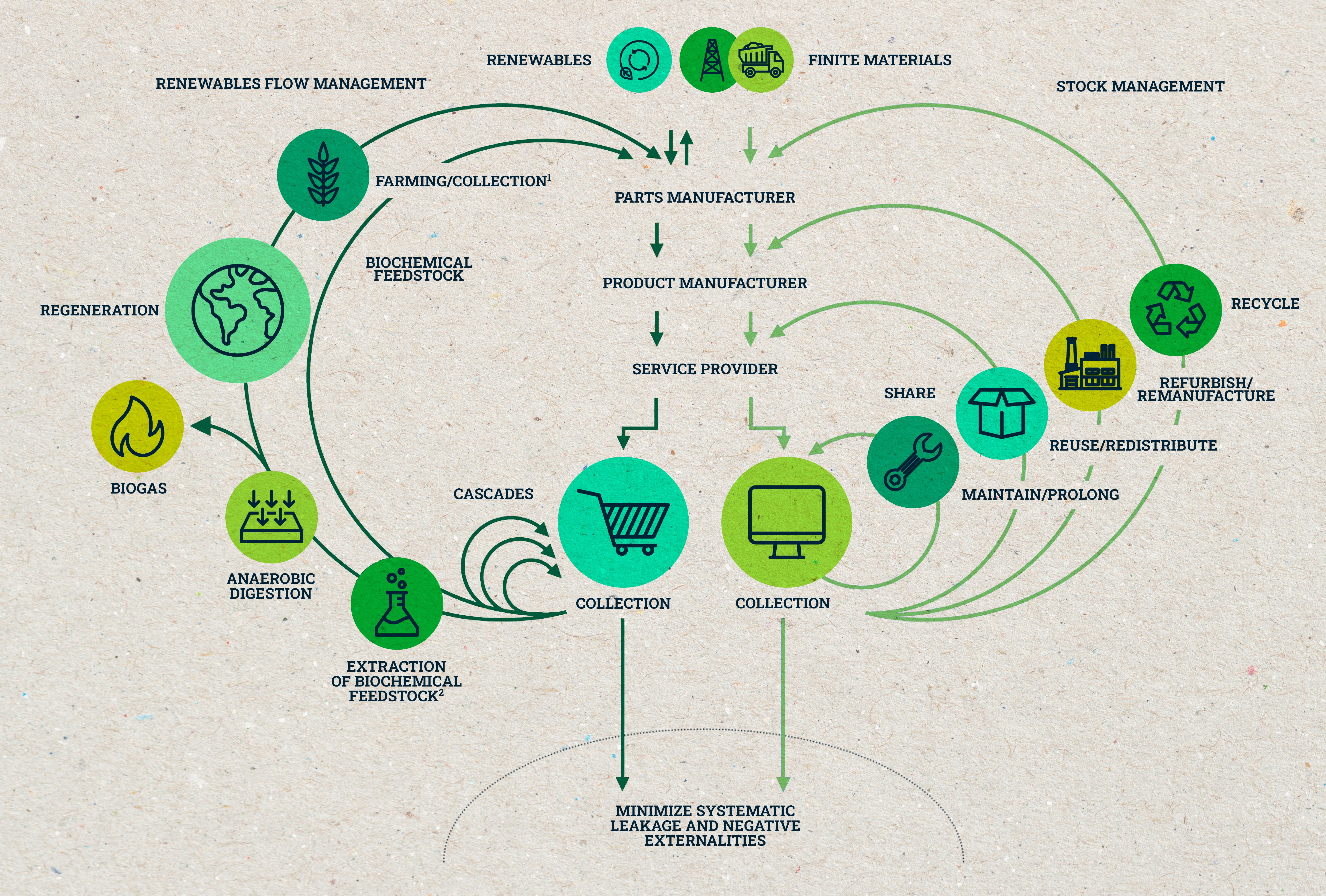Think about the manufacturing of your computer, car, or smartphone. The traditional manufacturing process extracts materials from the Earth. Then producers refine those materials to create other, usable things like plastic, glass, and aluminum. Those materials together create the final product. Eventually, those items will be thrown away. This is called a linear process. It has a beginning and an end.
With a circular economy, there is no defined beginning or end point. There is very little waste because things aren’t simply thrown out. New products enter the market and upon reaching the end of their usable life, are broken back down into raw materials that can be utilized again.
In this article, we’ll define the circular economy, show you how it works, and explain how your business can take advantage of it by rethinking waste.
What is a circular economy? CLICK HERE to find out more!
According to the EPA, a circular economy is one in which industries and economic activities are designed to be “restorative and regenerative” with the aim to eliminate waste. Materials in a circular economy are used in ways that maintain value for as long as possible. A circular economy is less resource intensive and any “waste” created can be turned into raw materials again for new products.
This butterfly diagram shows what a circular economy looks like. Through the processes of reuse, repair, recycle, and remanufacture, materials are kept in circulation for longer periods of time. Biodegradable materials can be broken down through processes like composting to help enrich the environment. The whole process aims to have as little waste as possible.
WHAT THIS MEANS FOR YOUR BUSINESS
Being part of a circular economy for your business can have a number of benefits from protecting the environment and the health of employees to potentially saving money on your bills. Here are 3 examples of how your business can take advantage of a circular economy:
1. Potential to save money on waste collection
The main goal of a circular economy is to minimize waste as much as possible. What that means for your business is potentially saving money on waste collection. One of the most productive ways to accomplish this is through waste reduction. By keeping materials in circulation for as long as possible, and continually reusing and recycling them, you can drastically reduce the volume of material being sent to a landfill.
Your business can reduce the number of pickups needed if there’s less being thrown out. There’s also the potential to save money by scaling down waste management equipment. Less being thrown away means your business won’t need as much space. On top of this, recycling material is generally much cheaper than sending waste to a landfill.
Being part of a circular economy is not only good for the environment, but it’s also good for the bottom line of your business.
2. Good for ESG score and investment potential
ESG stands for Environmental, Social, and Governance, and it’s a rating system based on how well a business can deal with risks related to the environment. It’s become a major player in the investment world in recent years. Some of the world’s largest investors have also taken notice of the circular economy model in this realm. BlackRock launched a public equity fund in 2019 focused on the circular economy. As of Dec. 5, 2022, the fund was worth more than $1.8 billion and included Evoqua Water Technologies, Coca-Cola, and Microsoft Corp, among other companies. Goldman Sachs launched a similar fund with more than $950 million in assets as of early Dec.
Working toward a circular economy with your business can yield big benefits when it comes to investors. From an ESG standpoint, it means your company is serious in terms of recycling programs and waste management practices and is actively seeking to reduce waste from the beginning.
What's the deal with ESG? Here's RoadRunner's guide with everything you need to know!
3. Cut greenhouse gas emissions
Another major benefit of embracing a circular economy is cutting greenhouse gas emissions (GHG). Manufacturing new products result in carbon emissions. A circular economy, by design, eliminates a large portion of the need to make new things from scratch because materials are reused and recycled. That eliminates a huge amount of carbon emissions, as much as 45% by some estimates.
Another way in which a circular economy impacts emissions has to do with organic waste. By returning this material to the environment outside of a landfill, it is able to break down naturally and feed new plants and animals. It’s also able to sequester carbon in this fashion. Microbes in the soil can utilize nutrients from compost programs, for example, and that keeps carbon in the ground instead of it being released as carbon dioxide.
Your business can take advantage of these opportunities to take another step toward reaching GHG emissions goals.
ROADRUNNER'S SOLUTIONS
RoadRunner’s custom, unique waste solutions are already helping companies move toward a circular economy. We’re cutting carbon emissions with our FleetHaul program. We’re ensuring recyclable materials are sorted and cleaned right from the start. That means items retain value and are in demand as feedstock for various industries. RoadRunner is finding ways to help businesses deal with e-waste and hazardous materials daily.

